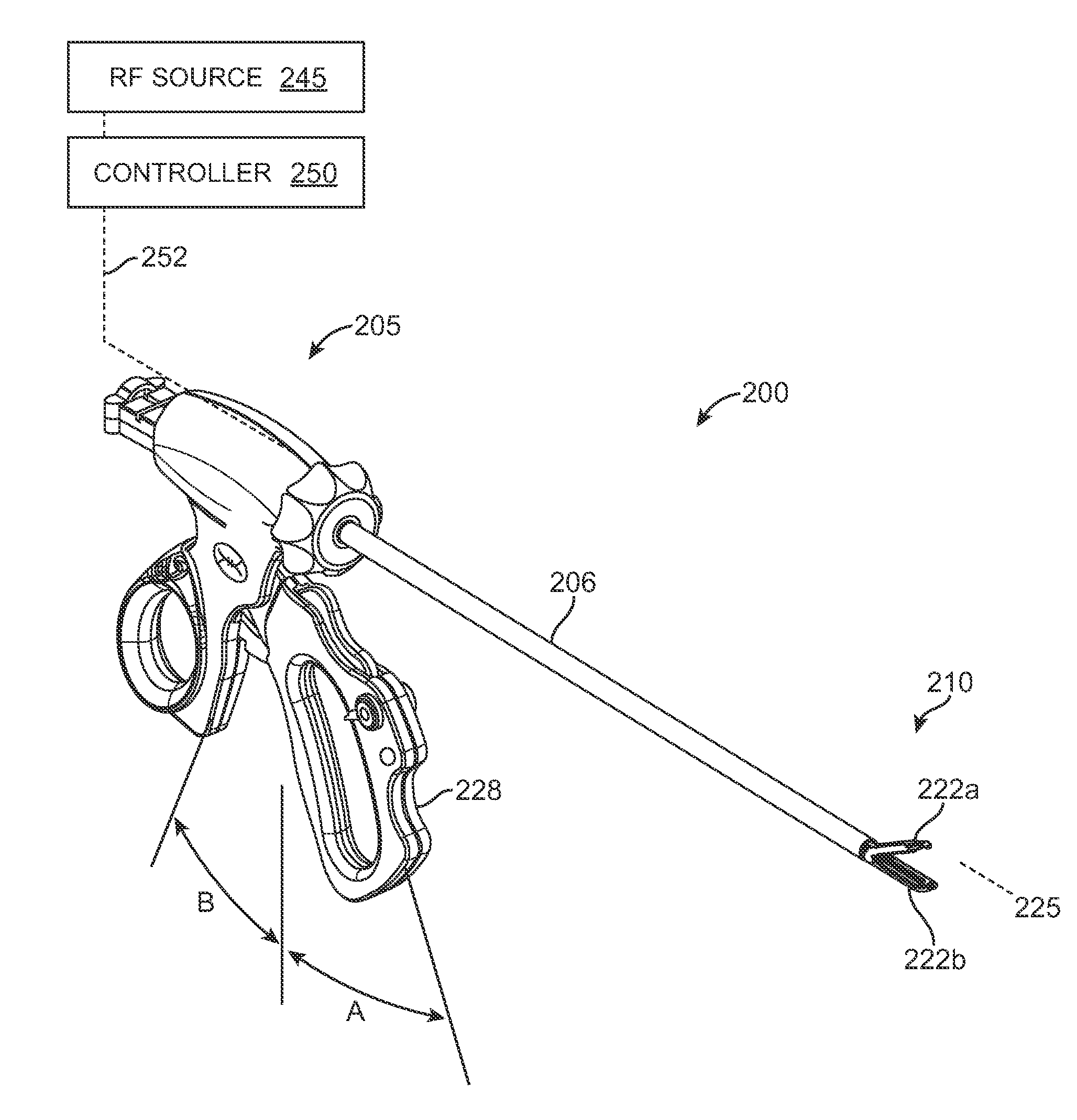Electrosurgical instrument and method
a surgical instrument and electrode technology, applied in the field of electrosurgical instruments, working ends, and methods, can solve the problems of non-uniform sealing or welding of tissue, ineffective bi-polar instruments, and inability to achieve uniform thermal effects in tissue,
- Summary
- Abstract
- Description
- Claims
- Application Information
AI Technical Summary
Benefits of technology
Problems solved by technology
Method used
Image
Examples
Embodiment Construction
[0043]1. Type “A” system for tissue sealing and transection. FIG. 1 shows an electrosurgical instrument 200 with a handle end 205 and introducer or shaft member 206. Introducer 206 carries the working end 210 and may be adapted for welding and transecting tissue. Working end 210 comprises an openable-closeable jaw assembly with straight or curved jaws, first jaw 222a and second jaw 222b. The jaws 222a and 222b may close and capture or engage tissue about an axis 225 and may also apply compression to the tissue. Introducer 206 has a cylindrical or rectangular cross-section and can comprises a thin-wall tubular sleeve that extends from handle 205. Handle 205 comprises a lever arm 228 adapted to actuate a translatable, reciprocating member 240 that also functions as a jaw-closing mechanism. The distal end of reciprocating member 240 comprises a flanged “I”-beam configured to slide within a channel 242 in the jaws 222a and 222b as seen in FIGS. 2A-2C. Jaw closing mechanisms and electros...
PUM
 Login to View More
Login to View More Abstract
Description
Claims
Application Information
 Login to View More
Login to View More - R&D
- Intellectual Property
- Life Sciences
- Materials
- Tech Scout
- Unparalleled Data Quality
- Higher Quality Content
- 60% Fewer Hallucinations
Browse by: Latest US Patents, China's latest patents, Technical Efficacy Thesaurus, Application Domain, Technology Topic, Popular Technical Reports.
© 2025 PatSnap. All rights reserved.Legal|Privacy policy|Modern Slavery Act Transparency Statement|Sitemap|About US| Contact US: help@patsnap.com



